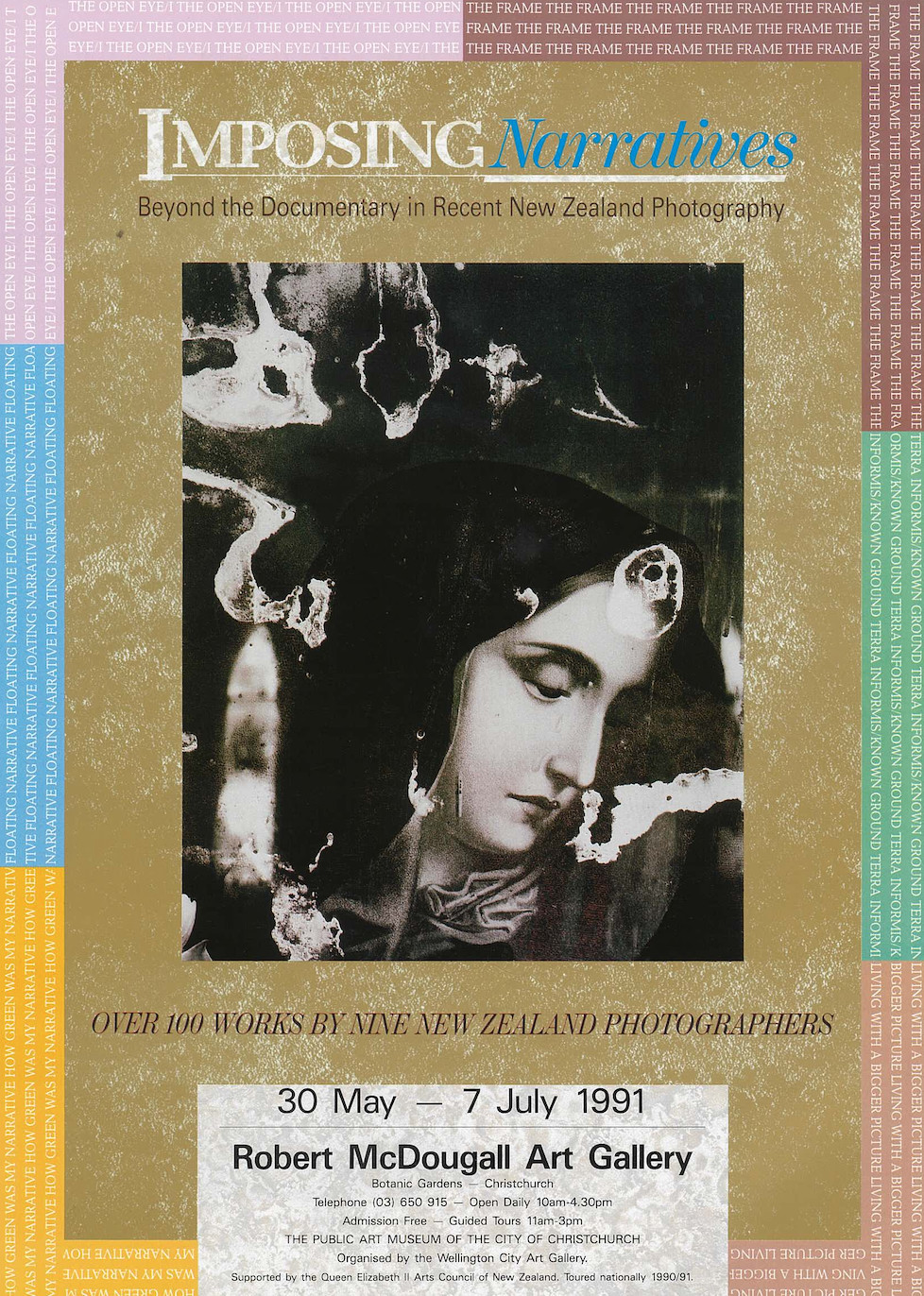This exhibition is now closed
The Virtues: Megan Jenkinson
17 January –
16 February 1996

In The Virtues innovative Auckland photographer Megan Jenkinson examines philosophical, moral, ethical and political issues and theories through the time-honoured techniques of personification, allegory and metaphor.
In The Virtues innovative Auckland photographer Megan Jenkinson examines philosophical, moral, ethical and political issues and theories through the time-honoured techniques of personification, allegory and metaphor.
Jenkinson's bold cibachrome collages explore the tensions between past and present, and virtue and vice, using a complex process of juxtaposition, weaving, splicing and layering. The belief is that "the world is so complicated, tangled and overloaded that to see it with any clarity you must prune and prune" (Italo Calvino If On a Wainter's Night a Traveller). This pruning is then followed by what Jenkinson refers to as "grafting", resulting in a hybrid image conveying the complexity of meaning.
This exhibition relates to work Jenkinson made based on this subject in the 1980s, and includes ten reworked photographs from the earlier series plus thirty new images.
Familiar allegorical figures such as Truth, Hope and Industry dominate the photographs. Some, carrying their traditional attributes, continue the West's long history of using female figures to represent moral qualities and to reinforce the faith. In Plato's Republic, the so-called Cardinal virtues (Justice, Prudence, Fortitude and Temperance were used to promote the founding values of the ideal state, and the early Church pitted the Virtues against the Vices lining up Charity against Lust and Patience against Wraith. During the Renaissance, increasing secularisation saw these themes expanded, and "new" deities such as Britannia appeared.
Unlike the composed figures of classical tradition, however, the virtues of Jenkinson's photographs are uncomfortably inept when placed in the modern world where attitudes have been reshuffled and realigned. Their once-defined positions no longer assure a predictable or optimistic outcome.
In The Virtues, the allegorical figures of Britannia is brought into an unstable and unfamiliar present, where she "weeps for the loss of her colonies". In evocative and fraught scenarios, the misplaced and outdated virtues attempt, and fail, to deal with the chaos and confusion of the shifting context into which they have been thrown.
In the face of such disarray, the virtues do not behave as we would expect. Vigilantia, the allegorical representation of watchfulness, falls asleep. Even the most triumphant of the virtues, Victory, seems resigned to defeat. Dressed as a soldier, with three arms, one saluting, the other two holding flowers for remembrance, she stands in front of a wall which lists the names of the dead or missing.
The aegis shapes that accompany each image are subtle reminders of the original perception of each virtue, serving as a counterpoint to the drama of each image. Similarly, the Latin subtitles revitalise classical insights in today's context. Strangers in a strange land, Jenkinson's virtues highlight the uncomfortable distance between the calmly reasoned classical world and the complexity and disorder of today's society, suggesting that the solutions of the past cannot be those of the present.
('The Virtues - Megan Jenkinson', Bulletin, No.105, December 1996/January 1997, p.3)
This exhibition was held at the McDougall Art Annex at the Arts Centre.
Exhibition number: 619


